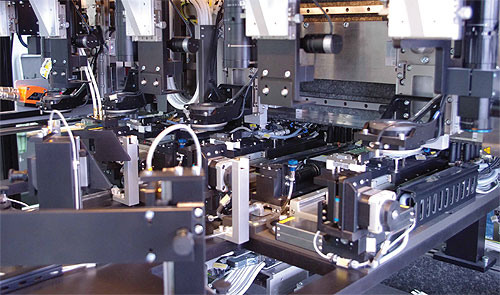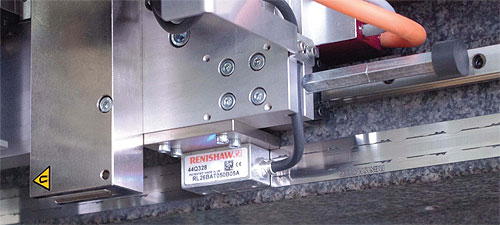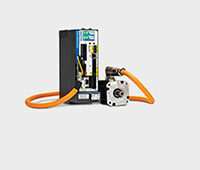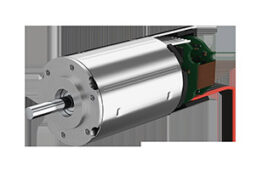In some semiconductor applications, component “multitasking” can lead to axes collisions. Amicra Microtechnologies, a developer and manufacturer of precision assembly systems that bond and mount active/passive semiconductors, lenses, MEMS and processors for microelectronics and micro-optics applications in the automotive, telecommunications and information technology industries found a way to prevent such collisions.

Its NovaPlus series machines handle surface mounting on wafers and stack-die assembly. They use an array of horizontal and vertical axes to perform multiple functions simultaneously. Reliability is critical in avoiding collisions. Incremental measuring systems installed in the company’s machines required reference runs upon commissioning or after a stoppage, and the machines were susceptible to axes collisions without excessive operator attention. Both issues created downtime—intolerable in high-production environments—so the company switched to Renishaw’s Resolute absolute optical encoders. The encoder system allows the machine axes to deliver absolute measurement without reference runs, and the encoders’ position detection method eliminated collisions that led to long periods of downtime. The new encoders help the micro assemblers achieve accuracy of ±0.5 µm and a process capability Cpk of 1.66.
Surface mounting on wafers and stack die technology are used to construct three-dimensional memory and computer structures. Semi-conductors are mounted horizontally and connected (SoC), as well as mounted vertically in several planes (TSV), and miniaturization of electronic components, a driving force behind their design, is dependent on the ability to achieve high packing densities. Amicra’s micro assembly machines use linear axes and special grippers from feed stations to pick up components and position them on boards or wafers where they are bonded or soldered, either conventionally or with a laser beam. The machine simultaneously positions a component while a second handling unit picks up the next component from a buffer store, and work tables and other linear axes with lasers and UV lamps move into position to solder and bond. Concurrently, additional axes position the machine’s integrated process monitoring cameras. These machines have a lot going on at the same time, so process reliability of these installations is particularly important, said Horst Lapsien, managing director of Amicra. More importantly, crashes between the alternate positioning grippers and the linear axes must be avoided. We achieve this through very precise programming of the motions, so the linear axes measuring system’s ability to detect current position of the slides reliably and accurately is paramount.
Incremental position sensors report an incremental change in position and, when powered up, do not report position until they have a reference point. Therefore, starting the NovaPlus’ production and mounting cycle upon commissioning or after a stoppage took a long time. The readheads of all the linear axes had to first travel to a reference position to detect the actual position of the axes, and moving to the reference positions from an undefined slide position also represented a significant source of error. If the operator had not first checked the crash paths and selected the reference travel cycle accordingly, the machines could suffer considerable damage as the result of gripper or gantry collisions.
Resolute encoders detect the absolute position immediately at switch-on, without a reference run, so the machines are able to start automated cycles more quickly upon commissioning or after a stoppage. Resolute’s single-track optical scale combines the absolute position and the embedded-phase information into a single code to eliminate de-phasing problems associated with dual-track scales. The single-track scale gives the encoder a wide set-up tolerance and allows for easy installation and long-term reliable operation, even if the axes settle or move over time. An integral set-up LED on the readhead provides a simple visual check that the scale is being read correctly, and further simplifies installation and diagnostics.
Resolute encoders feature a unique position detection method that operates like a very high-speed digital camera. High-resolution images of the scale are captured and analyzed by a powerful Digital Sensor Processor (DSP) that applies cross checking and error rejection to determine position to 1 nm. The encoder, combined with a built-in position-checking algorithm, also has high immunity to contamination. In a three-shift production operation, our machines have recorded zero stoppages due to reading errors of the system caused by dirty measuring tapes, added Lapsien.

The Resolute system’s RTLA absolute measuring scale can be bonded directly to the substrate or inserted into a special Fastrack guide, both made from stainless steel. The encoders install easily and compactly in the Amicra machines, achieving ±5 µm/m accuracy.
Another advantage is the encoder’s use of BiSS-C open serial protocol, which allows it to be integrated into many positioning axes. Many industry-standard servo drives and controls use this interface, added Lapsien. So, the open protocol allows us to avoid getting tied to a single supplier of motion system components.
Renishaw Inc
www.renishaw.com
Filed Under: Semiconductor manufacture, Encoders • optical, Encoders • absolute, MOTION CONTROL, MORE INDUSTRIES





Tell Us What You Think!